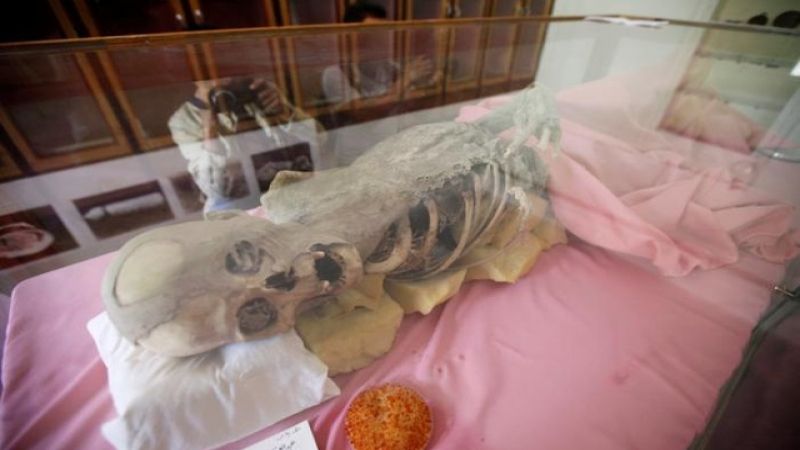
Local Editor
Famine and disease haunt the living, but not even the dead are spared the calamities of Yemen‘s war.
Ancient mummies are withering away in a major museum for lack of electricity and preservative chemicals from abroad – a sign that the conflict is harming not only the country’s present and future but also its rich past.
The dozen spindly corpses, curled into the fetal position or swaddled in baskets, belong to a lost pagan civilisation around two-and-a-half millennia ago.
Lying beneath glass panes within the archaeology department in the capital Sanaa’s main university, the mummies might have spent their eternal slumber blissfully unaware of the otherworldly warplanes pounding their homeland.
A Saudi-led military coalition has carried out thousands of air strikes. The conflict has killed at least 12,000 people and unleashed a humanitarian crisis.
But a timeless enemy, abetted by the disorder of war, threatens the mummies’ repose.
“The mummies have started to decay and are infected with bacteria. This is because we don’t have electricity and the machines that are supposed to maintain them,” said Abdelrahman Jarallah, head of the university’s antiquities department.
“We need some chemicals to sanitise the mummies every six months, and they aren’t available due to the political situation.”
Power cuts plague Sanaa, sapping the dehumidifiers that help preserve the ‘Hall of Mummies.’
Antiquities experts are appealing to the university and the culture ministry for funding and equipment to better fend off the microbes eating into the mummies‘ flesh.
But the Saudi coalition’s closure of Sanaa airport and a near-blockade over a key Red Sea port have cut off imports of all goods including the chemicals needed to ward off the microscopic menace.
Sheba and other Yemeni kingdoms once provided the frankincense and myrrh hauled by desert caravans to perfume the temples of the Holy Land and ancient Rome.
Modern combat, however, is disfiguring important cultural treasures. Air strikes have levelled medieval mudbrick towers in Sanaa’s old quarter, a medieval mosque and an Ottoman fort. Al Qaida militants have dynamited Sufi shrines.
“So many places have been destroyed because of this war,” lamented Ameeda Shaalan, an antiquities professor who still hopes the mummies can be saved. “We now have some things that have survived, and we must preserve them.”
Source: News Agencies, Edited by Website Team